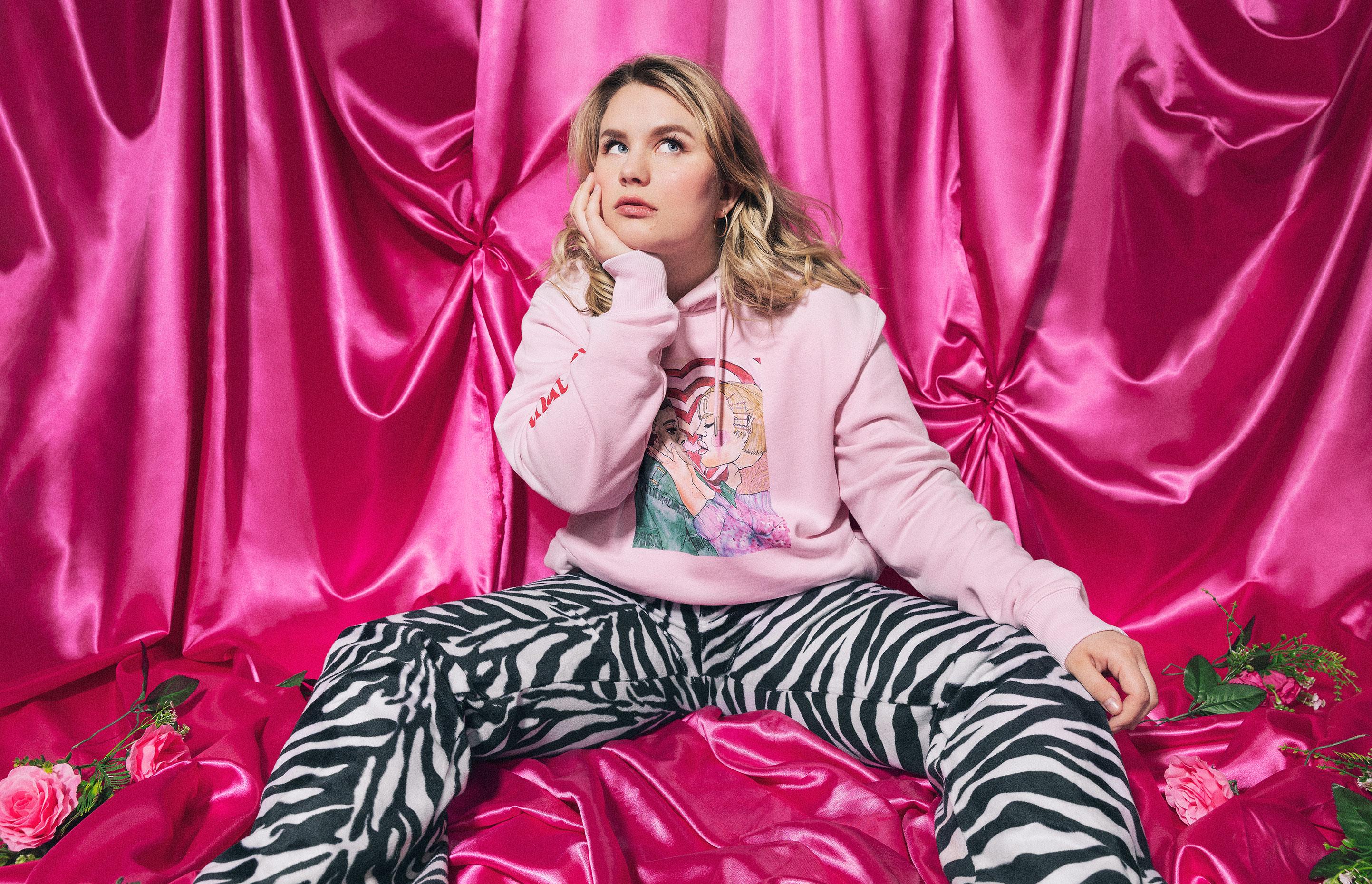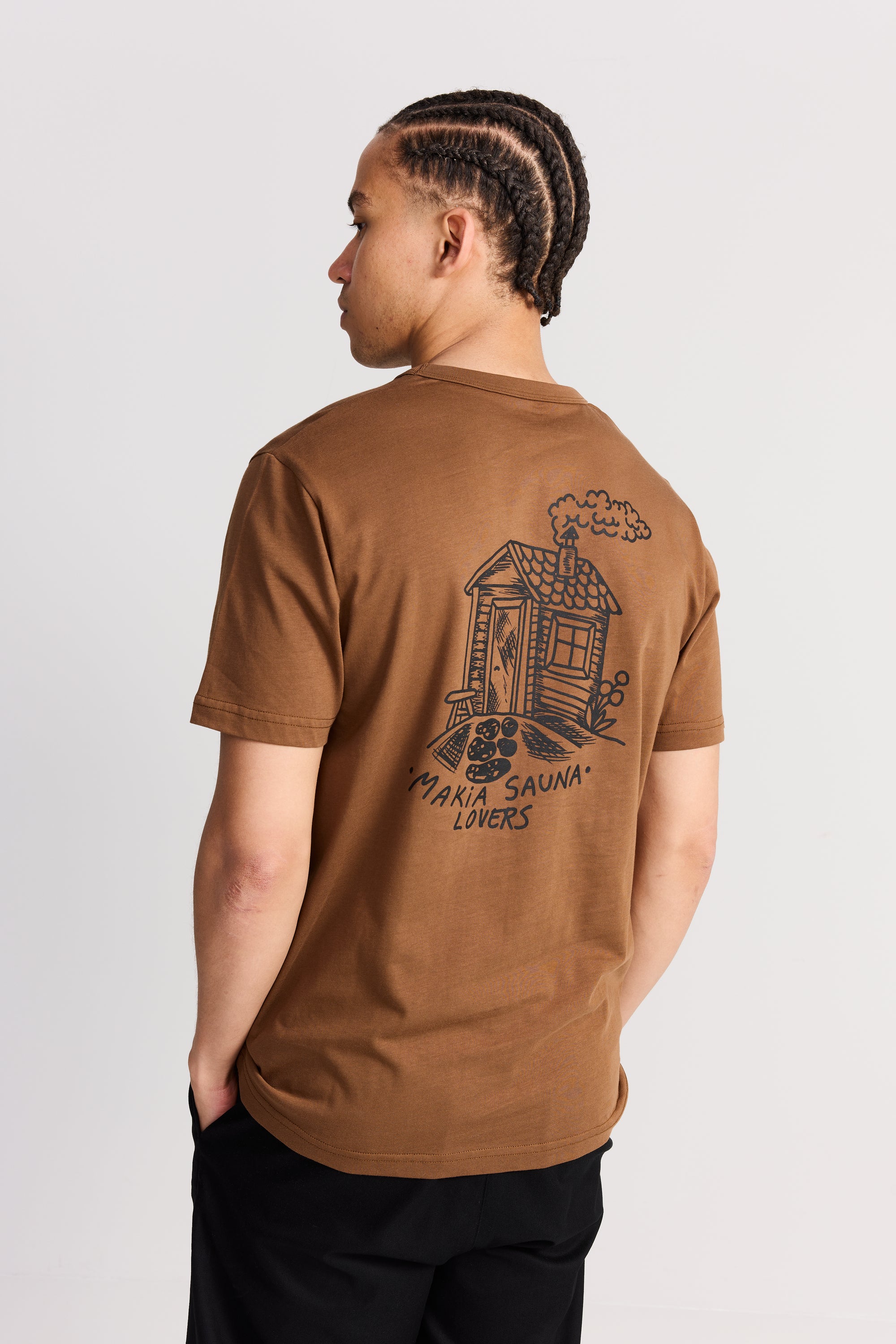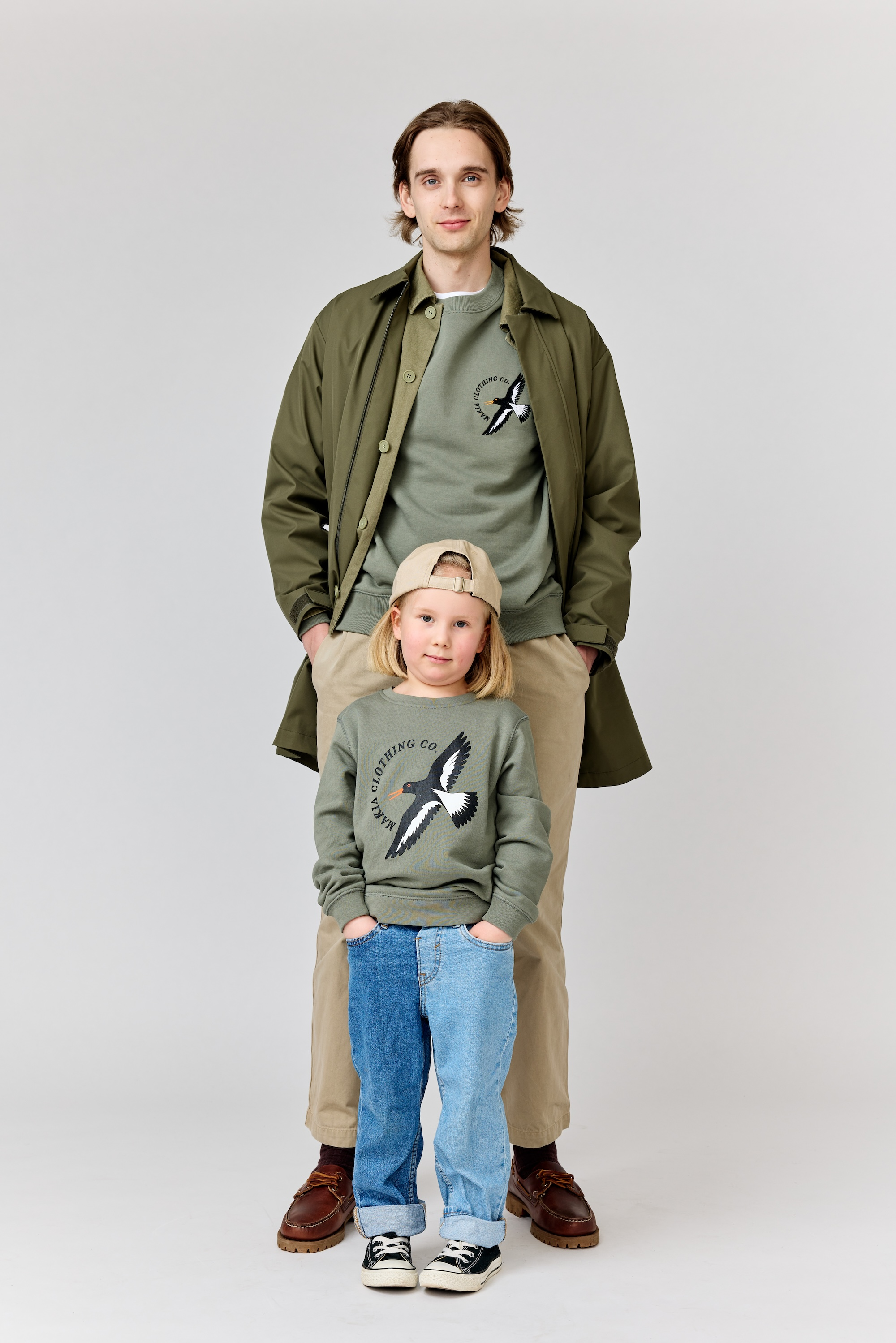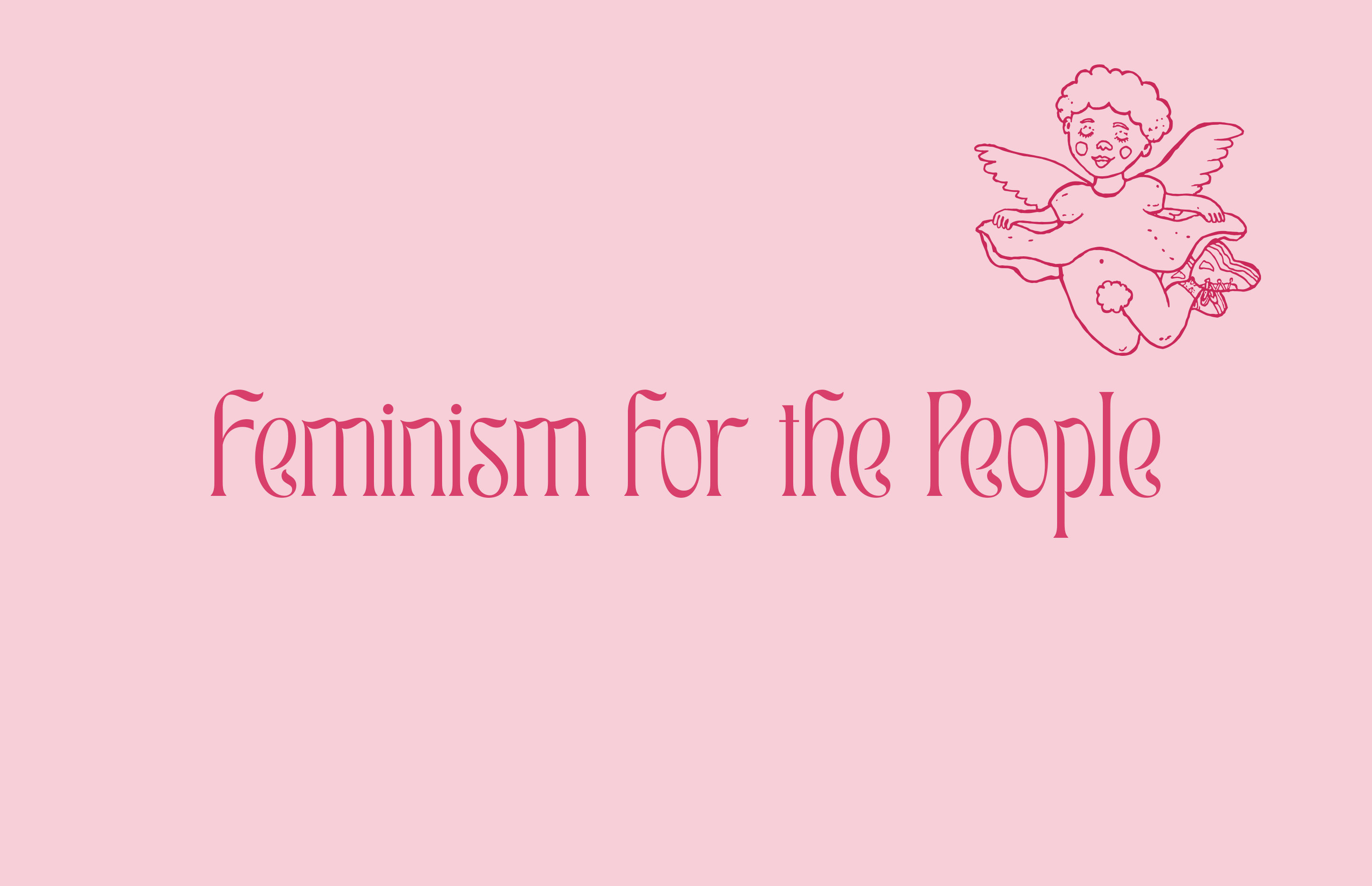
Makia & Friends: Riina Tanskanen
A short introduction.
Born in 1998, I am a social critic and artist, and I work especially on my Tympeät Tytöt (Grumpy Girls) art project. I live my life in Tampere, wander the library and the forests of Kauppi, and work slowly but surely for a master’s degree in literature. In addition, I am the founder and run the post-millennials online media Vita Nuova. I love art, conversations, books, weird combos, day coffees, and spring.
The birth of Tympeät Tytöt (eng. Grumpy Girls).
I set up an Instagram account for Tympeät Tytöt, in April 2020. The concept was born because I got tired of our society and its unequal norms, values, and attitudes that seemed to exist everywhere. Perhaps they existed even more strongly for me, because I grew up in Eastern Finland, in a small factory town where narrow gender roles still live tight. Honestly, I thought that if my possible life (or what seemed possible at the time) was basically awful for me, then what did it matter what I spend my time on? At least you can’t go in a worse direction. Tympeät Tytöt is the result of long-consuming pain, rage, grief, despair, nullification, and most of all, disgust.
So, Tympeät Tytöt was supposed to be my comfort project. I thought of nothing more than drawing out everything I had been incubating for years and feeling better. And that’s what Tympeät Tytöt was for me. The change was pretty radical. I stopped everything else and most of all, I stopped thinking that I should do “something decent” and started drawing like a demon. Pretty quickly I noticed that my project brought comfort to others as well. After the first summer, in a few months, Tympeät Tytöt had amassed more than 10,000 followers on Instagram, hundreds of messages rolled in every day, all with the same message: ” Thank you for finally putting these experiences into words – I recognise the exact same thing here.” And shockingly the feedback came not only from young women my age, but from women of all ages, from elementary school to retirement. Pretty soon I realised, that through my own disgust, I had reached something much wider, a shared, intergenerational pain that girls are used to keeping inside and thinking that they are alone with these pains. Now Tympeät Tytöt showed how there really aren’t any individual cases, and that we are not alone.
Tympeät Tytöt doesn’t personify anyone, and therefore the characters don’t have names. The intention is to shift the focus from our individual-centered thinking to the fact that these are not isolated cases. The things depicted by Tympeät Tytöt happen to girls constantly and everywhere. Grumpy Girls aren’t anyone – and at the same time, there’s something so familiar about their experiences that you can see in every girls lives. Tympeät Tytöt have woken up to the skewed norms of society and let the avalanche of dams open. In addition to numbness, the girls dare to bring out the full spectrum of humanity about themselves. At the same time, they can be conscious, complex, sharp, intolerable, ugly, powerful, flimsy, embarrassing, cute, nice, erroneous, annoying, arrogant, incredibly intelligent, unfinished, sex bombs, shy, ugly, foolish, wild …
Tympeät Tytöt (Grumpy Girls’) mission.
Tympeät Tytöt is a rebellion project against the cramped structures of our society and a culture of silence. By mixing the carnivalistic sweet images of girls with harsh social criticism, Tympeät Tytöt makes visible the collective pain that our society, which despises femininity, ultimately puts on everyone’s shoulders.
Tympeät Tytöt, which has become the most popular project in Finnish pop feminism, is a kind of public sociology in which, through the visual framework traditionally thought of as girlish, we look at the cruel truths about gender, power, the problems of our economic system and the Eurocentricity of our culture. Girly social critique already contains in itself a revolutionary tendency to make objects and symbols perceived as girly, as well as candy colors, a credible way of talking about social phenomena. At the same time, it also serves as a means of generalising the perceived difficult field of feminist theory by positioning structural phenomena in everyday life and lowering the threshold to address the issues of feminism.
Tympeät Tytöt doesn’t try to offer answers to problems, new absolute ones to replace old ones, but to stretch existing boundaries for more room to move, punch holes, and shake enough to start seeing through norms and what they really mean. For you can only change what you can see. The most important thing about Tympeät Tytöt is the understanding that no one is ready. As the breeds of this society, we each maintain narrow values and attitudes. But attitudes and, through them, structures arise when enough people consider something to be the norm. And each era always creates its own norms – so do we.
Describing the art.
The style of the Tympeät Tytöt consists of an ink drawing that combines candy colors, a personal line, dull girls, and the kitsch aesthetics of the early 2000s. The girls burst into delicious detail, and in themselves tune the viewer into a certain kind of, fantastically immersive atmosphere. Hand-drawn images are also part of an early 1970s tradition of feminist DIY cartoons, in which the form of drawing itself is a kind of protest against social power relations and an emancipatory attempt to break free from the demands of perfection imposed on women and “the right kind of art”.
This carnival cute imprint of drawing is combined with strictly socially critical texts that highlight a variety of skew. The texts go on to examine the norms, values, attitudes of our society – their historical roots, cultural-socio-economic levels, relationships of influence, and above all, how they are clearly visible in the everyday life of almost everyone after an initial seemingly abstract rigidity. Although the works deal with phenomena in a complex way, I try to do so above all in a way that is common sense and understandable. We don’t have unnecessarily many vernacular feminist projects, even though feminism is, to the greatest extent possible, an everyday act. Unequal structures are evident above all in everyday life, and we are easily left handless above them if we do not even have the means to identify them. The colourful images are gently cute guides and evocators around which texts build flesh. This collision gives rise to a narrative style characteristic of Tympeät Tytöt, a girly social critique.
Collaborating with Makia and relationship with clothes.
I really like this cooperation !! Of course, these clothes are absolutely gorgeous, but most of all, I look forward to seeing them get the equality work of naughty girls to take to the streets and, I hope, to a whole new kind of life.
My relationship with dressing is twofold: I have a ridiculously large arsenal of “home clothes” that are mostly so awful that I get shit from my close circle as well. But when I work from home, all that matters is practicality and relaxation – and especially when I do art, it’s nice not to have to be careful about getting my clothes dirty. On the other hand, in recent years, I have been passionate about colors and showy clothing, and 70s and 21st-century fashions. I dress strongly according to my mood, and when I invest I like special outfits and colour combinations. Here, too, I’m clearly on my way to something because my style is constantly evolving in a crazier direction. With a few exceptions, I have been buying virtually all of my used clothing from flea marketers for several years now. In addition, I make my own clothes and old tunes. It is also important for me to take care of and repair my clothes so that they last as long as possible.
A message for today’s youth.
I wish we could leave old stereotypes to their own and understand that feminism fights for our every space and equality – regardless of gender, class, colour, etc. And if you don’t fight, then well, you might ask if it’s feminism at all. Feminism is not really about any “girls’ stuff ”but about human rights, and they are all a matter for each of us. Everyone needs to be involved in order to achieve an equal world. Loosely quoting the thinker of black feminism, bell hooks, feminism is above all about the energy that is released when no one, regardless of gender, has to force themselves into a mold or live in fear.
Free word.
In his book – Mask Off : masculinity redefined, JJ Bola quotes comedian Frankie Boyle and sums up something essential:
”I’m going to tell you honestly what I think about feminism… I genuinely think, if you’re a young guy at the moment, feminism is the only thing that has a plan for you. Capitalism doesn’t give a fuck about you, materialism doesn’t really care if you live or you die. Feminism includes you. And when I see guys, particularly young guys, attacking feminism, do you know what it looks like to me? It looks like when the Fire Brigade go to really rough housing estate, and they get stoned. That’s what you’re doing, you’re stoning the fucking rescue services.”
Read more about the collaboration: Tympeät Tytöt (“Grumpy Girls”) – In english, In finnish
Read more about: Who made your Tympeät Tytöt shirt – In english, In finnish
Read Riina’s article: Feminism for the people – In english, In finnish




